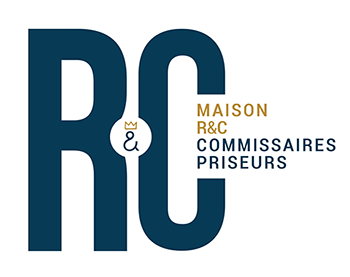Lot n° 62
Estimation :
350000 - 400000
EUR
Result without fees
Result
: 350 000EUR
Auguste RODIN (1840-1917)
The Bronze Age,... - Lot 62 - Maison R&C, Commissaires-Priseurs Associés
Auguste RODIN (1840-1917)
The Bronze Age, small model
Original plaster cast made in 1875-1877 This version was reduced in November 1904; our bronze proof was cast in July 1930 Bronze with a shaded brown patina Signed "Rodin" on the right-hand terrace Bears the founder's mark "Alexis Rudier / Fondeur Paris" on the right-hand rear side Bears the inner stamp "A. Rodin" H. 64,4 x W. 24,6 x D. 19 cm
Provenance: - Rodin Museum, Paris - Albert Dalimier (1876-1936), politician, Under-Secretary of State for Fine Arts at the time of the creation of the Rodin Museum in 1916, member of the first Board of Directors of the Rodin Museum from 1919 to 1923 (Acquired from the Rodin Museum, May 1931) - By descent, private collection, Paris - Leclere sale, Marseille, 27 October 2012, lot 91 - Private collection, South of France - By descent
Bibliography: - Antoinette Le Normand Romain, Rodin et le bronze, catalogue des œuvres conservées au Musée Rodin, Paris, Réunion des musées nationaux, 2007, vol. 1, pp.121-129 L'Âge d'Airain is without doubt one of Auguste Rodin's most emblematic works. The original plaster cast of this male nude was first presented in Brussels in January 1877. The genius of the future "Master of Meudon" was already present in the art of modelling, in the skilful interplay of light and shadow, and in the internalized emotion.
In 1877, Rodin, then a young practitioner of the famous Albert Carrier-Belleuse (1824-1887), whom he had followed to Brussels in 1871, tried to extricate himself from the imprint of his mentor and to make his own creations known.
The work, first entitled Le Vaincu, then L'Homme qui s'éveille and finally L'Âge d'airain (The Age of Bronze), was sent to Paris for the Salon of May 1877 (a Salon in which he participated for only the second time, his marble Man with a Broken Nose in 1875 not having been as well received as hoped). The presentation of this work caused a real scandal. The figure was so singular, so alive, so realistic that the members of the jury accused the artist of having moulded it from life.
In reality, Rodin was simply transposing in a masterly manner the lessons he had learned the previous year, in 1875, during his stay in Florence. His encounter with the works of the Renaissance and Michelangelo was a real revelation. The naturalism, vitality and anatomical precision of L'Âge d'Airain disconcerted the Salon jury and the public, who were used to the academicism that prevailed at the end of the 19th century.
In a troubled post-French-Prussian war context, Rodin, marked by the French defeat, may have wanted to transcribe the pain and the awareness of the individual responsibility of each Frenchman in the humiliating defeat. Through
this work, he illustrates more universally the awakening of a young man to the torments of the history that precedes him and the uncertainty of his future.
This very young man - the Belgian soldier and telegrapher, Auguste Neyt - is depicted life-size, one arm half raised, the other holding his hand to the top of his head, his body stretched out in a slightly contrapposto position. Here Rodin remarkably translates the torments of the human soul.
This scandal at the Salon, which could have destroyed his career as an artist before it was even born, pushed him to defend himself. He is rescued by Carrier-Belleuse, who witnessed the genesis of the work. Finally cleared of all suspicion, Rodin finally entered the spotlight. The State bought the work from him for the sum of 300 Francs and commissioned a bronze version from Thiébaut-frères in 1880. The masterpiece was placed in the Luxembourg Gardens in 1884.
As far as we know, the work, in its dimensions (H. 64.4 x W. 24.6 x D. 19 cm), was produced in bronze by Alexis Rudier in seventeen copies: five around 1907 and twelve from 1918 to 1945 (including ours). From 1945 onwards, Georges Rudier published six more copies.
This work will be included in the Catalogue Critique de l'œuvre Sculpté d'Auguste Rodin currently being prepared at the Brame & Lorenceau gallery under the direction of Jérôme Le Blay under the number 2012- 4003B.
My orders
Sale information
Sales conditions
Return to catalogue

